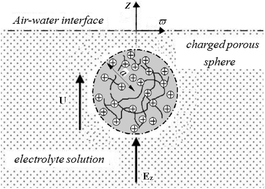Electrophoresis of a charged porous sphere normal to an air–water interface
Abstract
Electrophoretic behavior of a charged porous sphere normal to an air–water interface is investigated theoretically. The charged porous sphere is a very popular model of DNA and


 Please wait while we load your content...
Please wait while we load your content...